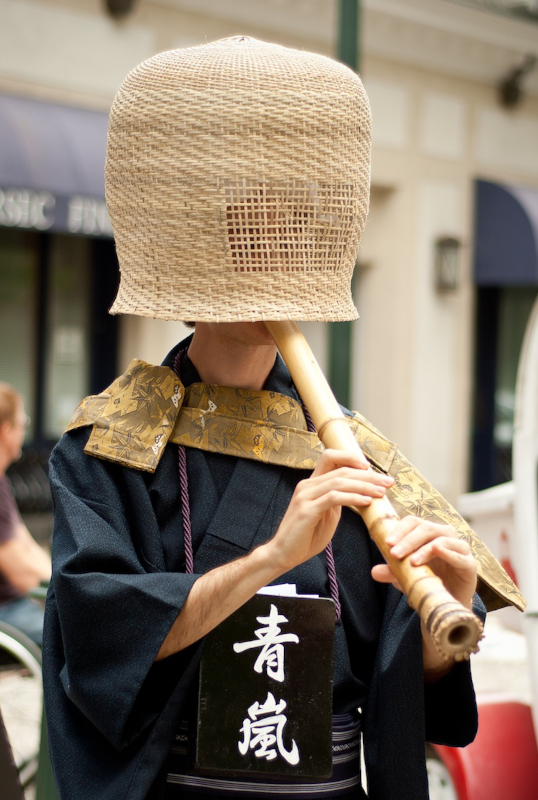
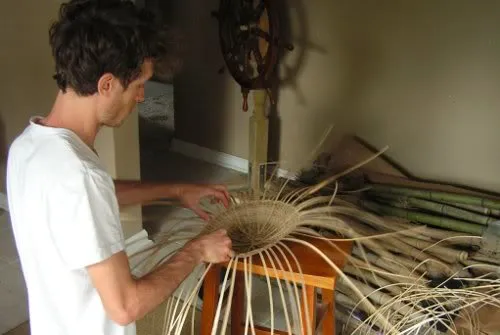

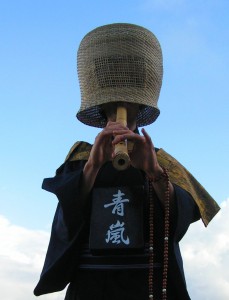
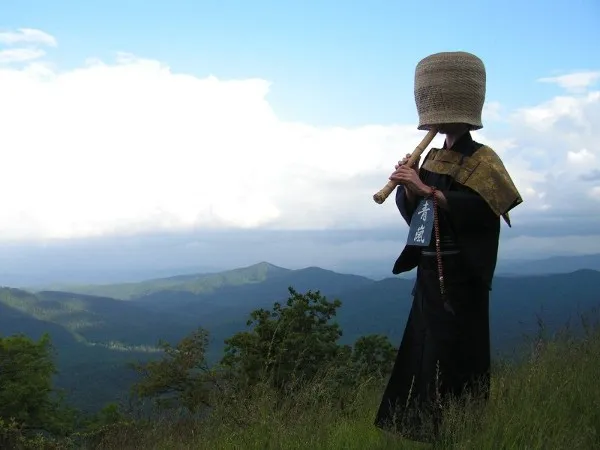
Above: practicing formal shakuhachi Takuhatsu Komuso alms begging and weaving my Tengai hat
A Hidden Komuso Practice Comes to Light
For years, I kept a secret close to my heart: my time spent practicing Komuso shakuhachi Takuhatsu on the streets of America. From roughly 2012 to 2020, this personal odyssey unfolded quietly, far from the internet’s gaze. That’s why I have only one picture of myself in those moments, the one you see above (the other photos are not of me practicing alms begging). A photographer from a news publication actually took that photo it without my consent. I asked the publication to remove the photo from their website, citing respect for my “religious practice.” However, they refused. Now, a decade later, and I must admit, I’m truly glad to have such a beautiful photograph of me practicing Takuhatsu or alms begging as a Komuso.
Weaving a Tengai, Weaving a Path
I lovingly wove my own Tengai hat. Then, at the start of the 2020 COVID outbreak, I sold it for charity. I imagine that one day, I’ll weave another. As far as I could discover, I might actually be the first non-Japanese person to weave one. This isn’t too surprising, though. After all, It’s a highly rare object to weave. Not to mentioned that the practice of Komuso Takuhatsu exists within the already increasingly rare practice of playing shakuhachi itself.
The Heart of Alms Begging
Uchiyama Kosho Roshi (1912-1998) wrote beautifully about Takuhatsu, or alms begging. He said, “The attitude of one on takuhatsu must be one of equanimity, whether no donation is received or a large one is received. In fact, the attitude of the mendicant on takuhatsu is one of giving an opportunity to people to materially support a life of one dedicated to zazen and the teaching of the Buddhadharma.” His words capture the true spirit of this practice, at least in my experience as a Komuso. Specifically, people feel good when they can show appreciation. However, sometimes your “alms” are their condemnation!
As for my own experiences, I hope sharing a bit here offers value to others. Much of my practice was about how I reacted or didn’t react to life’s unfolding: from living creatures to the elements, from ‘positive’ moments to ‘negative’ ones.
Embodying the Komuso
My intention was never to present “myself.” Instead, I aimed to embody the very act of playing shakuhachi as a Komuso on the streets. My hope was that “my identity” wouldn’t, and shouldn’t, matter. I wanted the shakuhachi, its rich history, and its powerful imagery to take center stage.
However, when you don a Tengai and play shakuhachi in public, especially in a society that barely recognizes, let alone respects, the Komuso image, interesting things happen. Many interactions were beautiful. I connected with others, the environment, this experience (no separation). Yet, there were also many concerning situations. You could say that stepping out as a Komuso in America’s streets is asking for trouble, and you’d be right!
Lessons from the Streets
For instance, as a Komuso people often invaded my personal space. The most bold touched my fingers, clothing, and even my shakuhachi. Some peered up under the Tengai. They’d talk about “me” as if I wasn’t there. Sometimes, I faced threats. I was verbally, and even physically, attacked. Other times, I was praised, even borderline worshipped. I suspect mental health issues were at play in many of these extreme encounters.
For some of us, this all sounds far too familiar, no Komuso practice required. Dehumanization is a daily reality for many. It comes in the form of bigotry and its cousin, idealization. (Perhaps I wouldn’t be writing this if my identity under the Tengai hadn’t been perceived or revealed as “white male.”) With or without a Tengai, we always encounter people projecting their ideas onto us. In my experience, I could only hope to become a “master of my self.” This meant mastering how I reacted, of course, but even more so, how I didn’t react to the fight, flight, and fawn responses. I had to face adrenaline, anxiety, fear, euphoria, pain: the whole spectrum.
Tips for Komuso Street Practice
I do have some tips for anyone considering playing shakuhachi in the streets. First, always position yourself with your back to a wall. Make sure nothing can fall or be dropped on you from above. Similarly, avoid corners of buildings/structures. Lastly, giving money to an irate person can defuse a situation. It might even save you from harm. Most importantly, unlike me, try not to go out alone.
Unveiling the Komuso Tengai: Truths and Myths
To wrap things up, let’s bust a few myths. Tengai offer no protection from rain or wind, none at all (I even constructed mine more tightly and thoroughly woven than most). Depending on the design, they hardly shield you from the sun either. And they make for a poor “disguise”! As I related earlier, anyone bold enough to simply bend down and look up under the Tengai will easily see the face of the Komuso. So much for the prevailing “Komuso spy’ mythos. It’s hilarious how so many myths and assumptions melt away like mist when touched by the light of actual experience.
To this day, The most vivid memory I hold is of a little girl who gave me a flower as alms. Josen

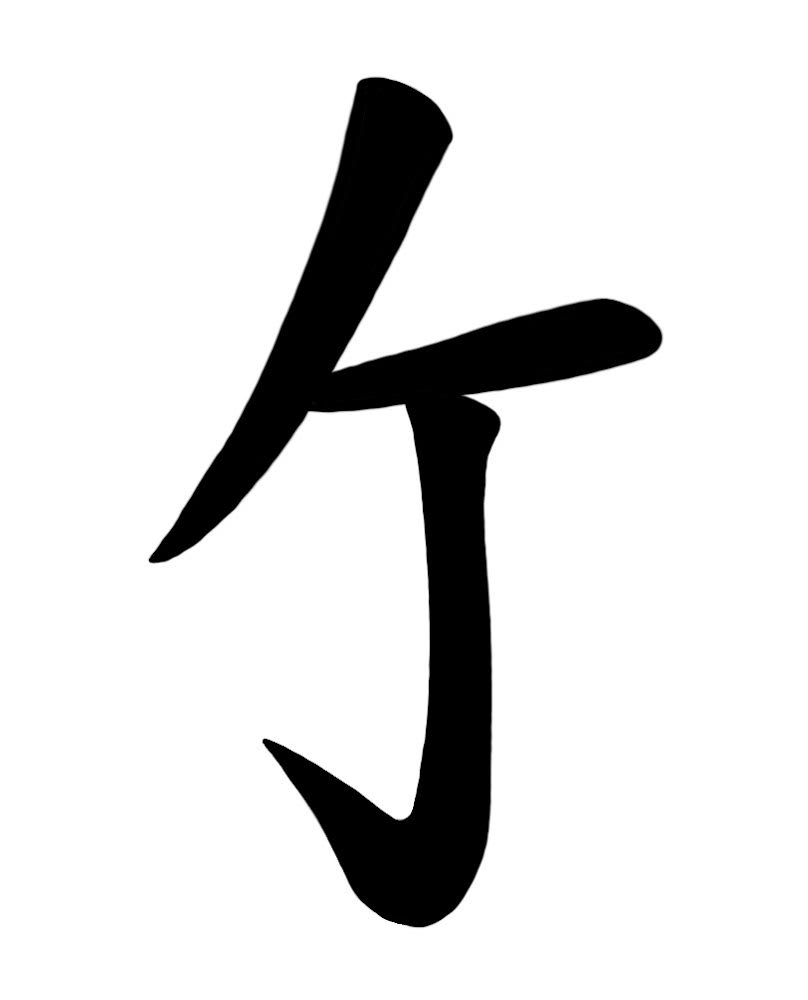
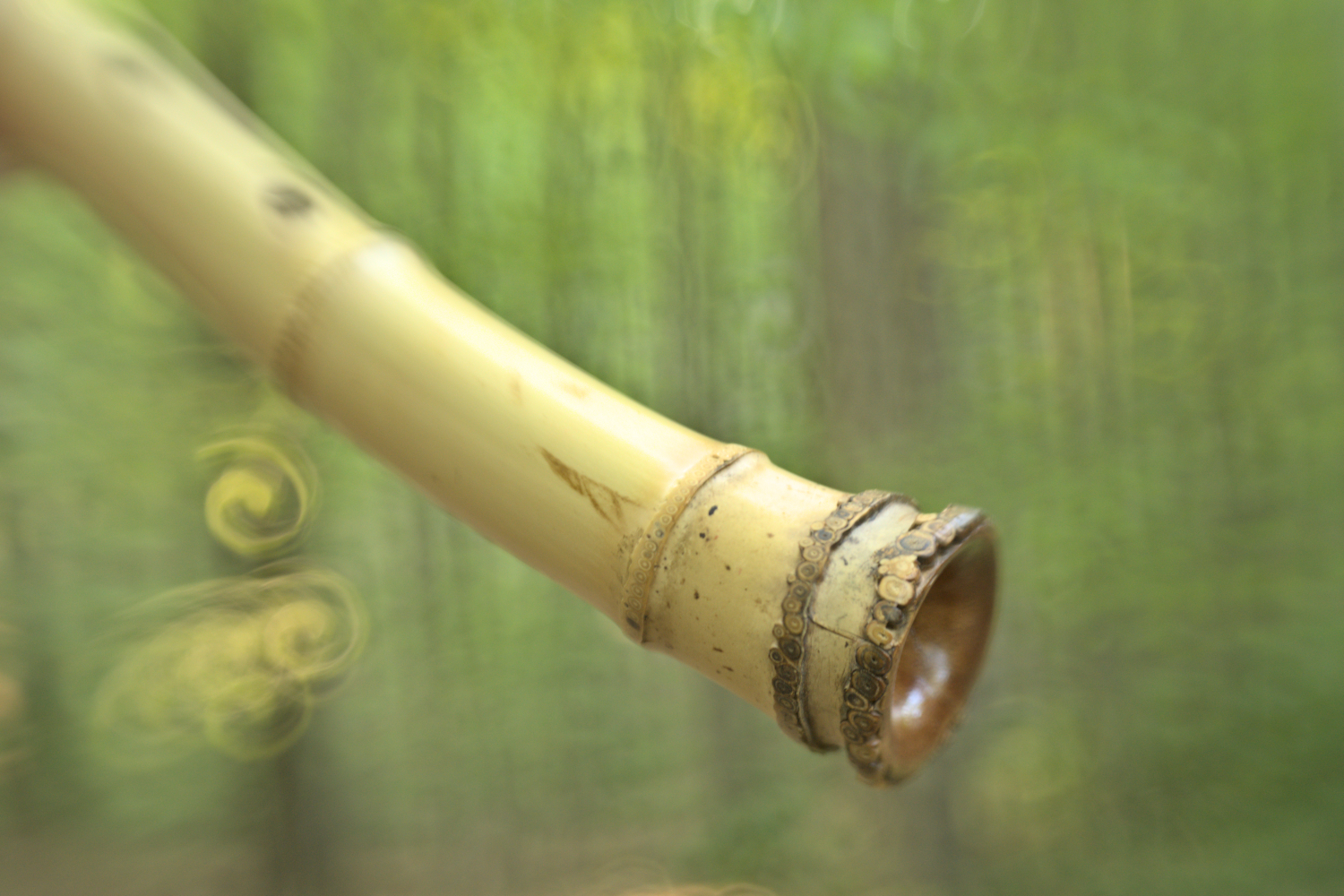
Leave a Reply